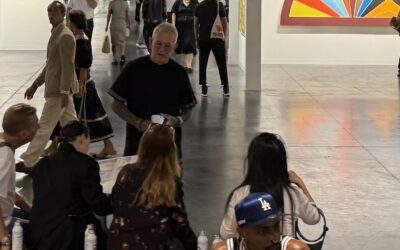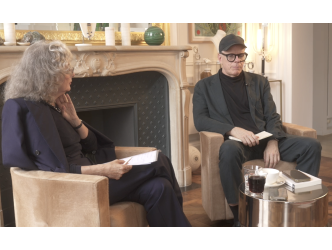A single face
A long journey centered around a single face. Imagine this: Between 1901 and 1924 alone, Henri Matisse completed more than one hundred portraits of Marguerite (1894-1982), his eldest child. Matisse held an obsession with portraiture, coupled with an obsession for this little girl with whom strangly he often identified. As a child, Marguerite was often in poor health, didn’t attend school and so often stayed quietly by her father’s side in the studio.
As the story goes, Paloma Picasso recalls a similarly serene disposition in childhood—one that often granted her quiet admittance into Pablo’s studio when she was just a little girl.
The black ribbon
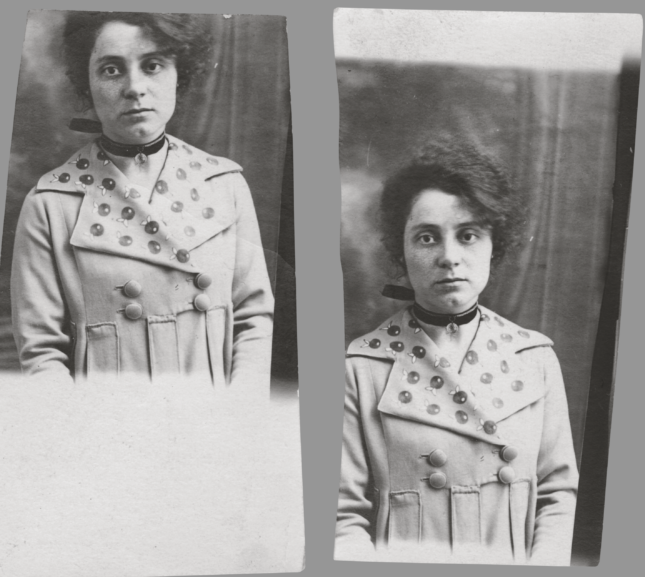
Marguerite Matisse
Marguerite was the daughter Matisse had had while still a painting student, during a brief relationship with Camille Joblaud. Matisse would not officially recognize her until three years after she was born. She had big eyes, an oval face and always wore a black ribbon around her neck to conceal scars from a surgery. The father’s love was often expressed in roundabout ways—like when he wrote to her in 1943: “We have nervous systems made from the same mold.”
Paradoxes of Matisse

Through August 24, the Musée d’Art Moderne de la Ville de Paris is offering a journey through 110 pieces (nearly half of them works on paper), exploring the artistic relationship between the genius Henri Matisse and his daughter Marguerite. It is an attempt to draw closer to the complex, creative interiority of the artist. An interiority full of paradoxes.
On the one hand, the master declared decisively: “It is from the first shock of contemplating a face that the dominant feeling emerges, one that guides me throughout the making of a portrait.”
Charlotte Barat-Mabille
Charlotte Barat-Mabille, co-curator of the exhibition, explains: “Matisse cannot begin a painting without starting from a model posing for him.”
Yet on the other hand, as soon as he can, he sets off into new territory, liberating himself without hesitation from the forms that initially inspired him. The portrait becomes a pretext for research, for a journey through the land of colors that pop and dance, and later, through the great world of clashing pictorial motifs.
Little ressemblance each to each
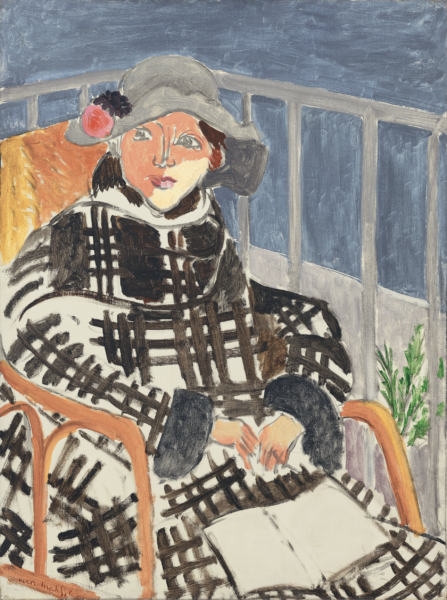
In the exhibition, Marguerite’s faces come one after another, often bearing little resemblance each to each. A woman in a hat, with a bun, at the window, seated in a checkered coat or caught mid-nap…One painting offers a compelling demonstration of this emancipated approach to the model: “White and Pink Head,” begun in the summer of 1914. It depicts a face literally striped with pink, black and white, as if overlaid with a grid. Matisse was influenced by the Cubism of his contemporaries at the time.
Marguerite would later recall this exchange with her father during the painting’s creation: “This canvas wants to take me somewhere else. Do you feel ready to go?” She replied, “Yes.”
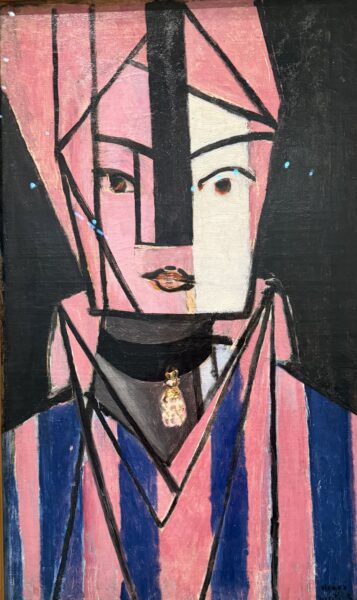
As though he were the child
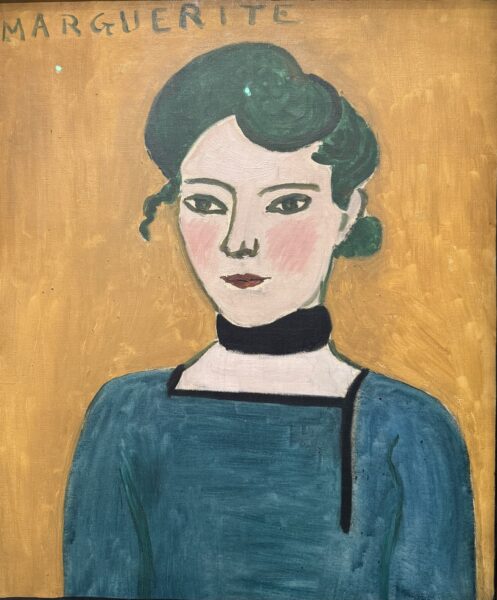
The most touching painting in the show dates from 1906-1907. Against a mustard-yellow background, the quiet young girl is depicted in very simplified forms. She’s in a dark green dress. Her features are crudely drawn with a few black strokes, and so are her eyes. At the top, Matisse has written, in a deliberately awkward scrawl, as though he were the child: “Marguerite.”
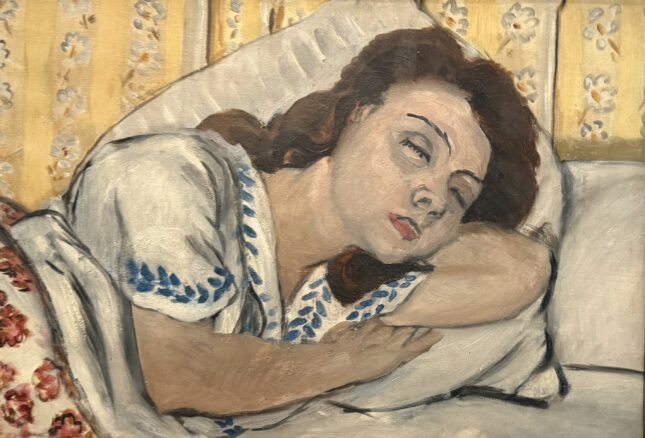
Exchanged with Picasso
The painting would go on to have an illustrious fate. While all the artist’s peers mocked its overly naïve appearance, Matisse exchanged it in 1907 with Picasso for a Cubist canvas. The master from Málaga kept the work with him for the rest of his life: in his apartment on the rue des Grands-Augustins in 1947, at the Château de Vauvenargues around 1960—displayed prominently in the dining room—and, finally, in his last home in Mougins.
Radical simplicity
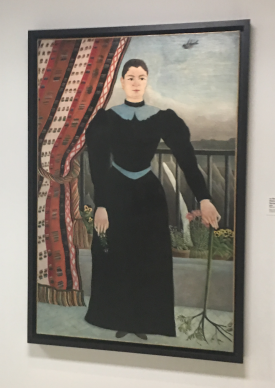
Le Douanier Rousseau
Picasso admired its radical simplicity, the unlearning of artistic virtuosity—a return to a kind of popular, childlike, spontaneous art, much like what he appreciated in the work of Le Douanier Rousseau. In fact, in the same spirit, Picasso would go on to acquire Rousseau’s famous “Portrait of a Woman” in 1908, a painting that resonates with a similar energy.
Françoise Gilot
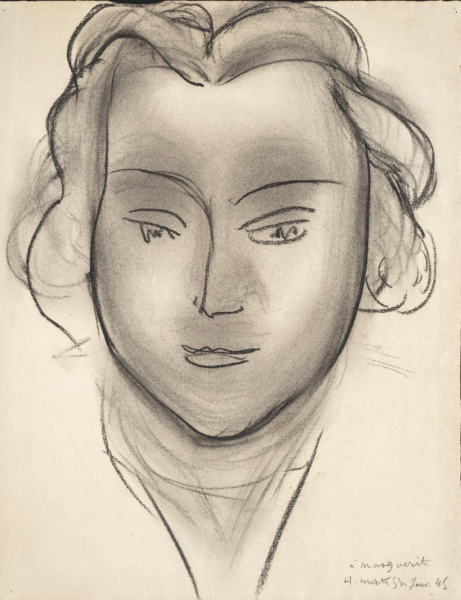
Henri Matisse
Françoise Gilot, Picasso’s most prolific companion, would later write about the portrait of Marguerite in Collioure, in the south-west of France: “Such spontaneity fascinated Picasso, who admired the courage it took for the master of Fauvism to express himself with such candor.”
And indeed, courage is a necessary virtue for any truly great painter.
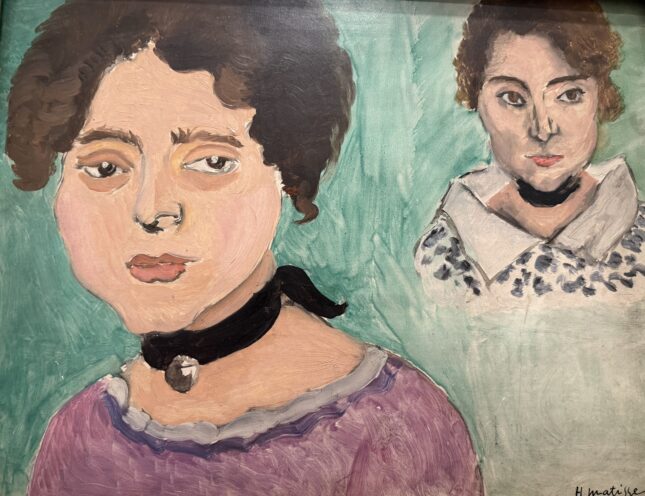
Through August 24
Support independent news on art.
Your contribution : Make a monthly commitment to support JB Reports or a one-off contribution as and when you feel like it. Choose the option that suits you best.
Need to cancel a recurring donation? Please go here.
The donation is considered to be a subscription for a fee set by the donor and for a duration also set by the donor.



